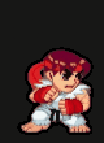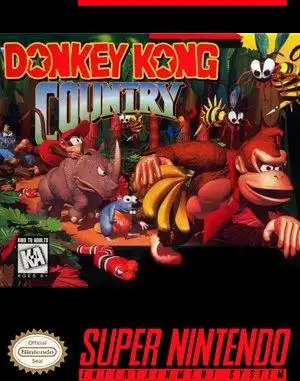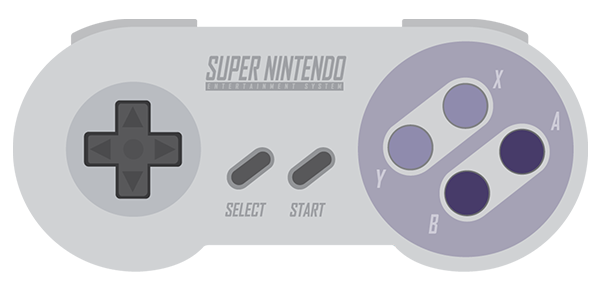Few games captured the imagination and dominated the playground chatter quite like Donkey Kong Country when it landed on the Super Nintendo Entertainment System. It wasn't just a game; it was a spectacle, a technical marvel that felt like a giant leap forward in the 16-bit era. Suddenly, our beloved flat sprites looked... real. Well, as real as a tie-wearing ape and his tiny sidekick could look in 1994. This game wasn't just a hit; it was a cultural moment for retro gamers everywhere.
The Hype Was Real
Nintendo and Rareware didn't just release Donkey Kong Country; they unleashed it with a marketing blitz that was unprecedented at the time. Remember the "ACM" (Advanced Computer Modeling) graphics? Nintendo Power magazines were plastered with screenshots that looked almost pre-rendered, promising a visual feast unlike anything seen on a home console. And for once, the game delivered on the hype. Seeing DK and Diddy swing through lush jungles, dive into sparkling underwater caverns, and navigate icy peaks felt revolutionary.
A Visual Masterpiece (For Its Time)
Let's be honest, the graphics were the headline act. Using pre-rendered 3D models that were then digitized into sprites gave Donkey Kong Country a unique look that stood out dramatically from its contemporaries. While some might argue about how well it holds up today compared to modern graphics, in 1994, it was mind-blowing. The characters had depth, the environments felt rich and layered, and the animations were incredibly smooth. It made the SNES feel like it was punching above its weight.
Swinging, Rolling, and Barrel Blasting: The Gameplay
Beyond the pretty pictures, Donkey Kong Country delivered solid platforming action. The core mechanics were classic 2D side-scrolling: jump, run, and defeat enemies by jumping on them or rolling through them.
Key gameplay elements included:
- Donkey Kong vs. Diddy Kong: You could swap between the two apes. DK was slower but stronger, able to defeat tougher enemies with a ground pound. Diddy was faster and could jump higher/further, making him great for tricky platforming sections. Losing one meant you were down a character until you found a "Kong Barrel."
- Barrel Cannons: A series staple, these barrels would launch you across gaps, sometimes requiring precise timing or aiming.
- Vines and Ropes: Essential for navigating vertical levels and swinging over hazards.
- Animal Friends: Unlockable animal companions like Rambi the rhino, Enguarde the swordfish, Squawks the parrot, and Expresso the ostrich added unique abilities and often led to hidden bonus areas.
- Bonus Levels: Hidden throughout each stage, these short challenges rewarded you with extra lives or bananas. Finding them all was a major part of the replayability.
While the controls were generally tight, some found the sequential multiplayer (players taking turns) a bit dated compared to simultaneous co-op in other games. The difficulty curve was fair but offered a decent challenge, especially in later levels.
The Soundtrack: An Unforgettable Earworm
If the graphics were the eyes, the music was the soul of Donkey Kong Country. David Wise crafted a soundtrack that is still celebrated today. From the iconic, upbeat "Gang-Plank Galleon" (King K. Rool's theme) to the atmospheric and slightly melancholic "Aquatic Ambience" or the chilling "Ice Cave Chant," the music perfectly complemented the visuals and environment, pulling you deeper into the game's world. It's a soundtrack many retro fans listen to even outside the game.
Friends, Foes, and... Bananas?
The premise is simple: King K. Rool and his Kremling Krew stole Donkey Kong's massive banana hoard. Your mission: get it back. Along the way, you'd encounter various Kremling enemies, from the basic Kritters to the annoying Neckies.
The bosses, while visually impressive thanks to the ACM tech, were often cited as a weaker point, sometimes feeling like just oversized regular enemies. However, the final showdown with King K. Rool himself was a memorable multi-phase fight that provided a satisfying conclusion.
Why It Still Swings Today
Over 25 years later, Donkey Kong Country remains a beloved classic. Its blend of stunning visuals (for the time), fantastic music, and solid platforming holds up remarkably well. It's a cornerstone of the SNES library and a game that defined a generation of gamers.
You can still experience this gem today through various means:
- Nintendo Switch Online: Available as part of the SNES library.
- Retro Consoles: Playable on original SNES hardware or emulator consoles.
- Digital Stores: Sometimes available on other platforms like the Wii U eShop (though less common now).
It's a game that's easy to pick up, challenging to master, and packed with nostalgia.
Frequently Asked Questions
Q: Why were the graphics so special for the time?
A: Donkey Kong Country used pre-rendered 3D models that were converted into 2D sprites. This technique, called Advanced Computer Modeling (ACM), gave the characters and environments a level of detail and depth rarely seen on 16-bit consoles, making them look almost three-dimensional.
Q: Is the game difficult? A: It offers a fair challenge. Early levels are relatively easy, but later stages introduce complex platforming, tricky enemy placements, and environmental hazards that require precise timing and skill. Finding bonus areas and extra lives is key to survival.
Q: Who developed Donkey Kong Country? A: The game was developed by Rareware (now Rare) and published by Nintendo. It was one of Rare's breakout hits and solidified their relationship with Nintendo.
Q: Does the game have co-op multiplayer? A: Yes, but it's sequential. Two players take turns playing levels, swapping control when one character loses a life or at the end of a stage. It's not simultaneous co-op like some other platformers.
Conclusion
Donkey Kong Country was more than just a game; it was a statement. It pushed the boundaries of what we thought the SNES could do, delivered a killer soundtrack, and provided platforming fun that still holds up. It's a perfect example of retro gaming magic – instantly recognizable, deeply nostalgic, and still genuinely fun to play. If you missed it the first time around, or just want to revisit a classic, grab a banana and swing back into the jungle. You won't regret it.


